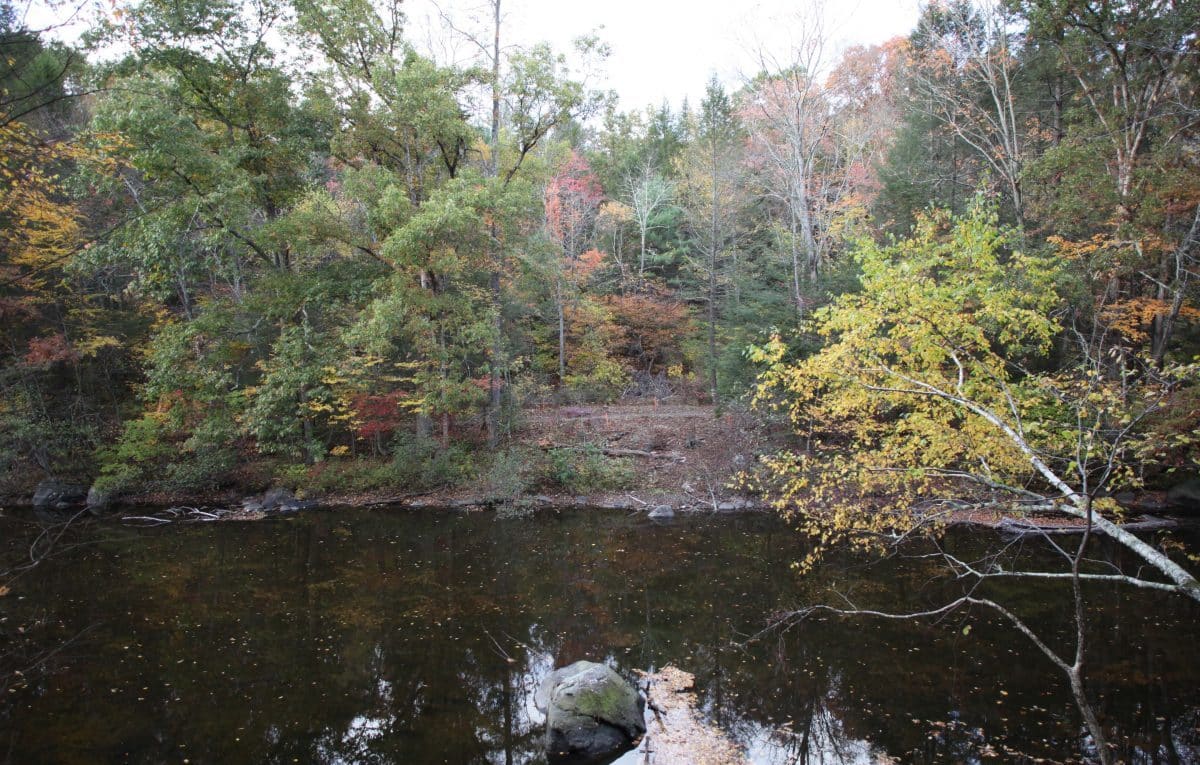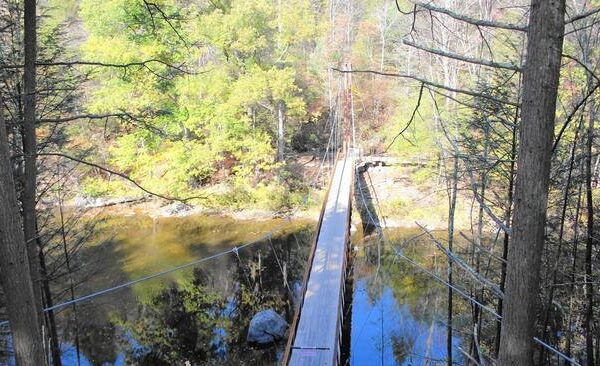Micropiles and Rock Anchors Provide Foundation Support for Steep Rock Footbridge
Location: Washington, CT
Technique: Drilled Micropiles, Rock Anchors
Introduction:
A new pedestrian bridge over the Shepaug River in rural Washington, Connecticut was the focal point of a walkway path upgrade. The design featured a suspension bridge spanning nearly 150 feet, requiring foundations capable of resisting significant compression and tension loads.
Project Challenges:
The design included vertical compression loads for some of the foundations and high tensile loads for the majority of the foundation structures. The load resistance design was further complicated with angled (non-vertical) tensile loads, requiring special consideration during foundation installation. In addition to the load resistance challenges, mobilization to and working within the environmentally-sensitive remote site required special considerations.


